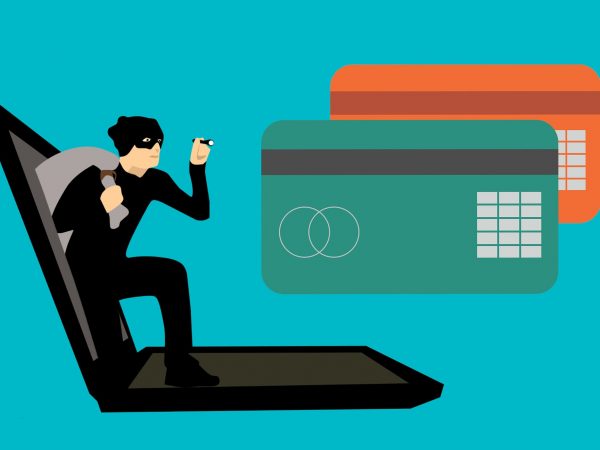
How much do you know about business cyber liability insurance? Take the quiz to find out.
Hackers attack a business network every minute. It’s a matter of when, not if, your data will be breached. Even so, you may have thought, “Hacking stats are fine, but what about cyber liability insurance stats? That’s the backstory I want to hear. And I want it in quiz form: a cyber quest for knowledge.”
Quest no further. Take the cyber liability insurance quiz to see how much you know. Check your answers at the end. No cheating.
1. Cyber liability insurance covers physical damage caused by a cyberattack on a business.
True or false?
2. Who needs commercial cyber liability insurance?
A) High-tech companies with public profiles
B) Large companies that process electronic payments
C) Small companies that store customer data
D) Any size business that uses electronic data
3. Commercial cyber liability insurance only covers customer data exposures, not internal company data exposures.
True or false?
4. All business owners policies include cyber liability coverage.
True or false?
5. Which costs are usually included in business cyber liability insurance?
A) Legal fees associated with a lawsuit
B) Free credit monitoring for customers
C) Restoring damaged computer networks
D) All of the above
6. Commercial cyber liability insurance is legally required in all states.
True or false?
7. Employee errors that lead to data breaches are covered by commercial cyber liability insurance.
True or false?
8. Cyber liability insurance covers costs associated with rebuilding your company’s reputation after a cyberattack.
True or false?
9. What are the factors insurance companies use to price cyber liability policies?
A) The type and size of the business
B) Cybersecurity, like multifactor authentication and artificial intelligence tools
C) Whether the business has cyber training for employees
D) All of the above
10. Third-party cyber coverage helps with direct losses to your company. First-party coverage is when someone else brings a claim against you.
True or false?
11. When was the first cyber insurance policy issued?
A) 1980
B) 1997
C) 2005
D) 2010
1. False. Personal property insurance covers physical computer damage. Commercial cyber liability insurance covers financial losses due to data breaches and cyberattacks, including:
- Legal fees
- Incident response hotlines
- Notifying customers and other public relations
- Mandatory credit monitoring for affected customers
- IT forensics to establish how the attackers infiltrated the network and what they took
- Computer network restoration
For example, let’s say your computer network was infected with ransomware right after your office caught fire. You’d file two claims relating to your computers: one under your property insurance for the loss of the physical computers and another under your cyber liability policy for the ransomware.
2. D. Any company that uses electronic data and has a connection to the internet should have cyber liability coverage. Most states have laws related to cyber liability and data exposure, including mandatory credit monitoring for customers affected by a breach. Companies must pay for monitoring, which can cost tens of thousands of dollars. They also have to pay to restore their computers and networks, in addition to improving their cybersecurity. These costs destroy profits.
3. False. Cyber liability covers customer and internal company data exposures. Cyber liability policies differ by insurance company and offer various add-ons based on your business operations. For example, let’s say your business is an online-only retail shop. You suffer a cyberattack. Customer data is exposed, and your store goes offline. It takes weeks to isolate and repair the damage to your network. Meanwhile, you’re losing revenue. In addition to a basic cyber policy, you’d need cyber business interruption to cover your losses. Ask your insurance agent for a cyber liability risk evaluation to determine the right coverage for your needs.
4. False. Standard business owners policies don’t include cyber liability coverage. You’d need to add it to your policy or buy a separate, stand-alone cyber policy. Also, standard business income replacement, or business interruption, coverage excludes cyberattacks. That’s because the damage in a cyberattack is digital, not physical. You’d need a cyber business income replacement policy to replace lost income after a cyberattack.
5. D. Most standard cyber liability policies include legal fees, credit monitoring and network restoration. Cyber liability policies are customized to meet your business’s needs and budget.
6. False. Cyber liability insurance is not required by law. Some states have laws requiring businesses to notify the state and their customers about data breaches. They come with fines and free credit monitoring requirements for affected customers. Cyber insurance can help cover these costs.
7. True. If an employee makes an error or takes an action that leads to an unintentional data breach, your commercial cyber liability insurance policy will cover you. But if it’s discovered that the employee was part of the cyberattack, you might not be covered. You’d need employee fidelity and crime insurance for that.
8. True. Surveys show that customers will avoid a company involved in a cyberattack. Cyber liability insurance covers public relations expenses related to rebuilding your reputation and restoring public trust.
9. D. Insurance companies evaluate a business’s type, size, cybersecurity and employee cyber training. Human error is one of the biggest factors in cyberattacks, like social engineering scams. Having a proven, robust training program in addition to cybersecurity can help lower the risk of a successful attack. Insurance companies give better rates to businesses that work to lower their risk.
10. False. Third-party cyber coverage protects you from liability if someone else suffers losses due to a cyberattack on your business. It covers payments to customers, litigation, regulatory response costs and settlements. First-party cyber coverage responds to losses you experience due to a cyberattack on your business.
11. B. The first cyber insurance policy was issued in 1997 in response to growing concerns about new risks and liabilities associated with the internet. In 1988, the first known malware was released by a graduate student who wanted to see how far it would travel. The malware was a worm, malicious code that propagates on its own. It infected 6,000 of the 60,000 internet-connected computers globally. This was one year before the launch of the World Wide Web. The worm slowed the digital operations of universities and institutions like NASA. The incident triggered a national awakening about internet vulnerabilities.
That’s the backstory on cyber insurance and an overview of what it covers. How’d you do? The next time third-party coverage comes up in conversation, you’ll be ready.
Contact us today to protect your business.


